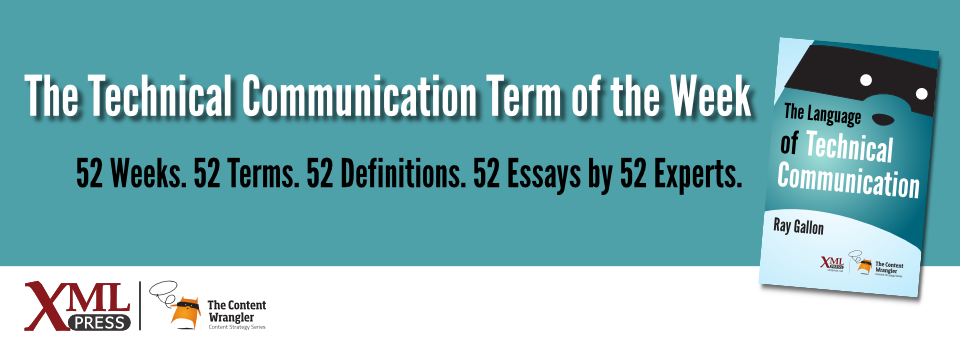What is it?
Attributes of content you can use to structure, semantically define, and target content.
Why is it important?
Metadata extends the capabilities of content, making it more powerful and effecting efficient operation in a data-driven world.

Attributes of content you can use to structure, semantically define, and target content.
Metadata extends the capabilities of content, making it more powerful and effecting efficient operation in a data-driven world.
Guidelines that determine who has ownership and responsibility for various aspects of an organization.
A governance model makes it clear who has authority to make which decisions about content and contributes to smooth operational decisions and processes.
A research discipline that provides strategic solutions to business needs by analyzing changing markets and industry trends.
Business analysis helps technical communicators better understand the audience they are writing for and helps them align content goals with strategic business goals, thus increasing product value and consumer loyalty.
Everything needed to complete (or end) a temporary effort, preferably with schedule, budget, scope, quality, and risk constraints in balance.
Writing well is just the start. You also have to organize and deliver your work on time and on budget, in a way that leaves your collaborators willing to work with you again.
The overall outcome of a user’s interaction with a product, service, or organization across all touch-points, experienced through the lens of the user’s personal background and preferences.
User experience is the comprehensive, holistic measurement of organizational performance and understanding of the market, because every user is unique and any link in the chain can harm their experience.
A broad term for describing the different forms of content that can help people use a software application or other technological product correctly.
User assistance places the work that technical communicators do within the framework of user-centered design, of improving the experience of a user, rather than seeing that work as simply creating manuals.
Content that is modular, structured, reusable, format-free, and semantically rich and, as a consequence, discoverable, reconfigurable, and adaptable.
Intelligent content enables organizations to rapidly adapt their content to the changing needs of their customers and the devices they use.
A self-contained unit of information, most often with text-intensive content in printed or digital formats. In its broadest sense, a document can also include audio, video, or interactive content as well as text. We can even stretch this definition to fit documents that are enhanced with sensing, computational, and communications capabilities, such as augmented reality documents that overlay context-sensitive information on their base content.
Documents organize the interactions between people, between people and enterprises and institutions, and between the machines and computers that are ubiquitous and essential in today’s information-intensive world.
Any text, image, video, decoration, or user-consumable elements that contribute to comprehension.
Content is the single most-used way of understanding an organization’s products or services, stories, and brand.